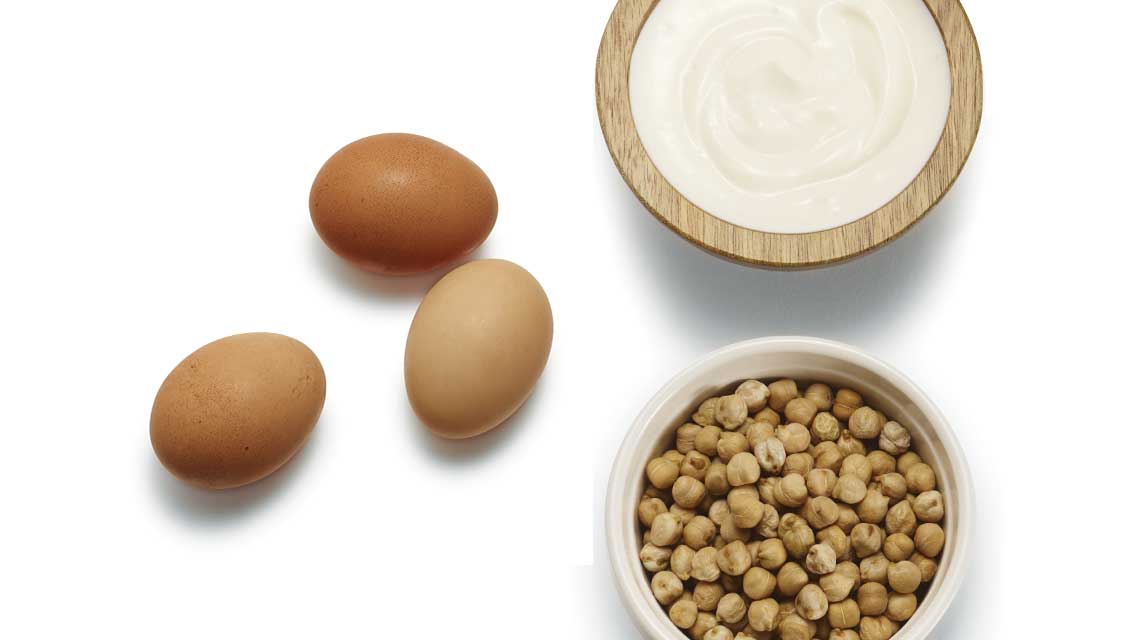The words detox and cleanse are used so often that, to many, they have become meaningless. You know they are used to tout juices and spas and all things healthy. But while these words are often used to promote healthy behavior, nothing they are being used to promote will actually flush out toxins.
That’s OK, because you can get your body to “detox” and “cleanse” itself. And you can control that process.
All you need to do is get your body to eat itself. I’m talking about “autophagy,”which literally means “self-eating,” and it is a natural detox process that allows for the removal of toxins from your cells. In addition to the natural wear and tear that our bodies experience, environmental toxins accumulate in our cells, accelerating the signs of aging. Autophagy is the cellular process that removes those toxins and repairs the damage left behind — and it is a fundamental process that helps keep your cells acting young.
So how do you get your cells to self-cannibalize? The answer, strangely enough, is in what and when you feed them. Understanding how nutrition can activate autophagy gives you the power to detox your cells and slow aging.
My Glow15 protocol is not a diet. A diet is all about numbers: the number on the scale, the number of calories you eat and burn, and the number of foods you’re allowed to eat. On a diet, success is defined in terms of how well you stick to your numbers. Instead, this plan is all about results: energy, vitality, and strength. I’ll give you the guidelines and nutrients to add to your existing food plan for maximum youth benefits. On Glow15, success is defined in terms of how well you feel, look, and thrive.
Eat, Drink, Glow
So how do you get your body to eat itself? Autophagy is activated in “stress mode,” so you’ll want to stress your cells a little bit in order to get them to start dining on your fat, wrinkles, brain fog, and exhaustion. One of the best ways to do this is through smart nutrition.
Smart nutrition starts with understanding that there’s value in all the macronutrients (protein, fat, and carbohydrates) and micronutrients (vitamins, polyphenols, and minerals) found in natural foods. Again, instead of getting into a laundry list of “do” and “do not” and “don’t you dare” foods, it’s best to think about what foods will do the most to boost your youthfulness. It’s also important to learn more about timing as it relates to your diet, because when you eat can make the biggest impact on how youthful you look and feel.
IFPC may sound like it stands for some kind of international health organization, but it serves as the Glow15 approach to eating to activate your youth. IF stands for Intermittent Fasting, and PC stands for Protein Cycling. While it may sound complicated, it’s not in practice. Together, IF and PC serve as your autophagy on-off switch, the ignition that gets autophagy going. As with any fire, you need the spark to start it — and IFPC is it. As your body cycles through IFPC, you create a rhythm to your nutrition that allows autophagy to do its job — and this makes your cells act younger and healthier than they actually are.
Let’s take a look at how IF and PC work separately and then what happens when you put them together.
Intermittent Fasting (IF): IF is the practice of shifting between periods of unrestricted eating and restricted eating and is a key activator of autophagy. This is the most natural way to enhance your stress-response mode and put your cellular cleanup crew to work. If you’re constantly eating — which is the case for many of us as we graze throughout the day — it doesn’t give your cells a chance to repair and clean up the waste and toxins they have accumulated. Short periods of fasting give them the time to take care of those tasks.
Specifically, IF works by activating glucagon, which works in opposition to insulin to keep your blood-glucose levels balanced. Think of a see-saw: If one side goes up, the other goes down. In your body, if insulin goes up, glucagon goes down, and vice versa. When you give your body food, insulin automatically rises and glucagon starts to decrease. But the opposite happens when you deny your body nutrients — insulin goes down and glucagon rises. An increase in glucagon triggers autophagy. This is why temporarily denying your body nutrients, or intermittent fasting, is one of the best ways to boost the youth of your cells.
Research has shown that many of the benefits of IF — like burning more fat, providing more energy, and decreasing your risk of developing diabetes and heart disease — can be attributed to the activation of autophagy.
A fascinating finding from the journal Obesity is that, in many cases, IF encourages the body to burn more fat while sparing muscle. In fact, it is four times better than caloric restriction at helping your body burn fat while preventing lean tissue loss.
In practical terms, here’s how IF works on the Glow15 plan: On three nonconsecutive days (your “Low” days) you will fast for 16 hours and eat during an eight-hour period. You can begin your fast after dinner the night before so the majority of your fasting hours occur during sleep. For example, if you stop eating at 8 p.m. and fast overnight, your first meal will be at noon the next day, so essentially, you’ll only be skipping breakfast. As long as your fast lasts for 16 hours, you can adapt your IF to your schedule. If you prefer to eat breakfast, you can start your fast earlier by skipping dinner the night before. Make the hours work for you, your body, and your lifestyle.
There is no need to fast for any longer than 16 hours. Research shows that 16 hours is optimal for creating the caloric restriction that happens during fasting and can activate autophagy through different nutrient pathways. A study published in the journal Cell Metabolism, led by Valter Longo from the University of Southern California with the participation of other researchers and clinicians from around the globe, reported that cycles of intermittent fasting have numerous positive effects, such as decreasing visceral fat, reducing cancer rates, improving the immune system, slowing down the loss of bone mineral density, and increasing longevity.
Protein Cycling (PC): PC is the practice of alternating between periods of low protein consumption and normal to high protein consumption. On Glow15 you will limit your protein intake to about 25 grams on the same three days you practice IF (your “Low” days). The other four days (your “High” days), you will eat normal to high amounts of protein.
PC has an effect similar to fasting. Creating protein deficiency also lowers your insulin levels — it’s that seesaw again — and that, in turn, boosts your glucagon and activates autophagy. This means your body will not store the foods you eat as fat, but instead work to build muscle and burn fat.
One of the main reasons PC works to enhance youth is because your body can’t create its own protein. Instead, it is forced to find every possible way to recycle the existing protein you’ve already provided it. If you deprive your body of protein, it will enhance autophagy, kicking your body’s recycling program into overdrive.
The problem is, we don’t normally deprive ourselves of protein. Actually, we generally eat enough protein to keep autophagy in “maintenance” mode. On average, we eat 70 grams of protein daily, which is more than one and half times the recommended amount for women. But our bodies can handle periods without protein — if you think about it, this goes back to our ancestors, the hunter-gatherers who often had to survive for periods without a successful hunt. (Interesting note: Breast milk, the ideal and most complete food for babies, meant to be consumed when tiny bodies and brains need the best possible nutrition and are growing the fastest, derives only 6 percent of its calories from protein.) Now we have to choose to deny ourselves protein.
To be clear, “low” is not always the way to go. Being in a constant state of low protein will actually contribute to aging in the form of muscle wasting accompanied by increasing weakness, and immune deficiencies. So you need to have both high- and low-protein days — that’s the cycling part — and there is evidence that protein cycling can help reduce the risk of diseases, such as diabetes, cancer, and heart disease, in addition to enhancing autophagy.
IFPC: Picture the ocean. Those waves, big or small, are mesmerizing as they roll up onto shore, then retreat back. The beauty of the ocean comes from that serene rhythm. Autophagy — like the ocean — is driven by cycles and rhythms. It needs to have an ebb and flow, which is what IFPC allows your body to do — rolling in and out of autophagy cycles. Remember, you want to turn autophagy on and off — inducing autophagy without inhibiting it is like always inhaling without exhaling.
When autophagy is turned on by intermittent fasting plus protein restriction, it creates a true shortage in your body that can only be corrected by your cellular cleanup crew doing its job. Of course, eventually the restriction must end to prevent overworking the system and damaging your cells, but for the entire restriction period, autophagy will be at work, since human cells must constantly make new proteins, regardless of conditions, in order to function.
Research shows that depriving your body of specific nutrients is actually better for your metabolism than continuous caloric restriction: Markers of metabolic health experienced greater improvements, including improvements in cholesterol, blood pressure, and inflammation, from intermittent fasting and protein restriction than from calorie restriction alone.
Excerpted from GLOW15 by Naomi Whittel. Copyright © 2018 by Naomi Whittel Brands, LLC. Reprinted by permission of Houghton Mifflin Harcourt Publishing Company. All rights reserved.




This Post Has 0 Comments